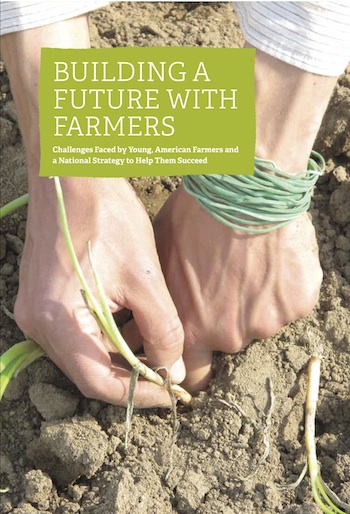It seems everyone in the world eats goat meat but Americans. However, the preference for goat meat in the U.S. is rapidly increasing, as reflected in the record high prices of the last two years.
“This increase in consumption is primarily related to a rapidly growing population from traditional goat consuming residents,” said Dr. Jodie Pennington, small ruminant educator with Lincoln University Extension.
Presently, 16 percent of the U.S. population is Hispanic and 4 percent of the population is Asian. The Hispanic population in the U.S. has grown 5-fold since 1970.
“The Hispanic population should provide a significant consumer base for goat meat products, particularly fresh goat meat served around festivals or significant occasions,” said Pennington.
Hispanic Interest
Since many Hispanics are Christian, and many are Catholic, producers can expect the highest consumption periods of goat meat for Hispanics, especially Mexicans, to be around Christmas, New Years, and Easter according to Pennington.
“With Cinco de Mayo being May 5, it also increases goat meat consumption by Mexicans during the period surrounding Easter,” said Pennington.
For those celebrating the Western or traditional Easter, the ideal goat is a milk-fed kid weighing 30 pounds. For those celebrating the Eastern, Orthodox or Greek Easter (which generally coincides with, or follows, the Western Easter), a slightly larger, 35 pound milk-fed kid is preferred. However, larger goats are also acceptable but may sell for slightly less per pound.
“The Latino market prefers a suckling kid weighing 20-35 pounds with larger kids preferred for pit barbecuing,” said Pennington.
Muslim Interest
The U.S. is also experiencing growth in religious groups that prefer goat meat, particularly those of the Muslim/Islam faith.
Ramadan is the ninth month of the Islamic calendar which lasts for 29 or 30 days. Festival meals take place each night since no food is consumed between sunrise and sunset.
Male or female kids that are less than one year old and weigh 60 pounds are desired, but weaned kids between 45-120 pounds may be acceptable. For the past few years, Ramadan has coincided with September - November, the months when most kids are weaned and sold.
Traditionally, this also is the time when prices fall due to seasonal weaning and increases in numbers sold. However, for the next few years, Ramadan will be earlier in the calendar year, being on July 20 in 2012 and moving 11 days earlier each year.
“Muslim holidays are based on the lunar calendar which is 11 days less than our traditional solar calendar. How the movement of Ramadan toward summer and spring months will affect fall goat prices remains to be seen,” said Pennington.
The Festival of Sacrifice (Eid al-Adha) is a Muslin market for blemish free yearlings, preferably uncastrated bucks. Large kids weighing 60-100 pounds may be acceptable. The Festival of Harvest was Oct. 18 this year and futures dates are Oct. 26, 2012, and Oct. 5, 2013.
Seasons Impact
“Goats tend to be seasonal breeders, coming into heat as daylight shortens from late August to early January. Most kids are born in late winter to early spring and weaned in the late summer or fall. This creates a market kid shortage during the late winter and early spring months, and over-supplies the market during late summer and fall,” said Pennington.
Easter (the Western or traditional Easter) has the strongest goat meat demand in the U.S. Pennington says market kid and goat meat prices tend to reach their peak just before the Western Easter (March-April), drop significantly during June, continue trending downward through October-November, then begin rising toward the Christmas season (December).
Fresh goat meat shortages force the prices to continue upward until they peak again during the Easter season (March-April).
“How the changing dates of Ramadan and the increased demand for goat meat will affect the best times to market goats remains to be determined. Yet, producers should plan their marketing strategies around the traditional ethnic holidays—which means marketing two to four weeks before those holidays,” said Pennington.
For more information, contact Pennington at the Newton County Extension Center, (417) 455-9500, or by e-mail at
PenningtonJ@lincolnu.edu.
 The On-Farm Food Safety Project is a comprehensive national program that offers fruit and vegetable farmers, food safety professionals and agricultural extension specialists technical assistance to utilize and teach best practices in food safety.
The On-Farm Food Safety Project is a comprehensive national program that offers fruit and vegetable farmers, food safety professionals and agricultural extension specialists technical assistance to utilize and teach best practices in food safety.















 You wouldn’t forget to wash your hands after ‘playing’ in the soil, so why should your garden tools get this treatment? Garden tools often get neglected and ignored until there is a major problem. With a little bit of maintenance at the end of the gardening season you can keep your tools looking like new for many years to come.
You wouldn’t forget to wash your hands after ‘playing’ in the soil, so why should your garden tools get this treatment? Garden tools often get neglected and ignored until there is a major problem. With a little bit of maintenance at the end of the gardening season you can keep your tools looking like new for many years to come.
